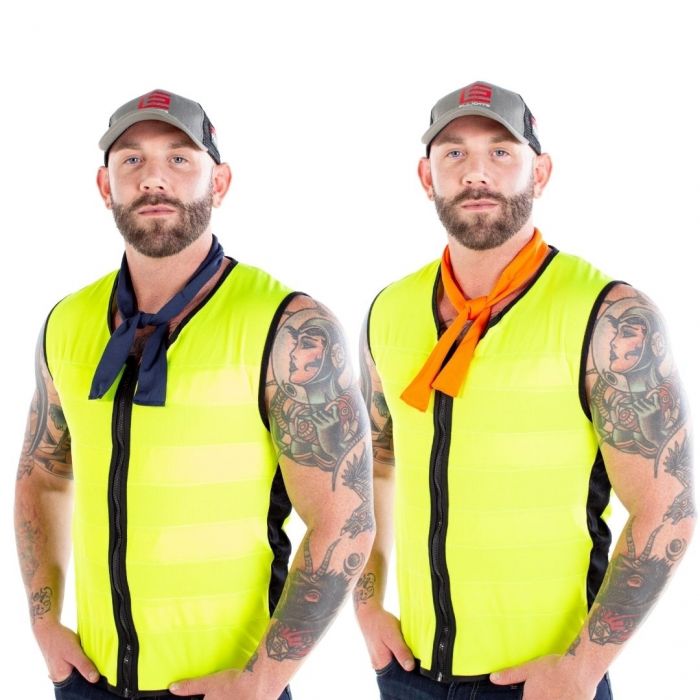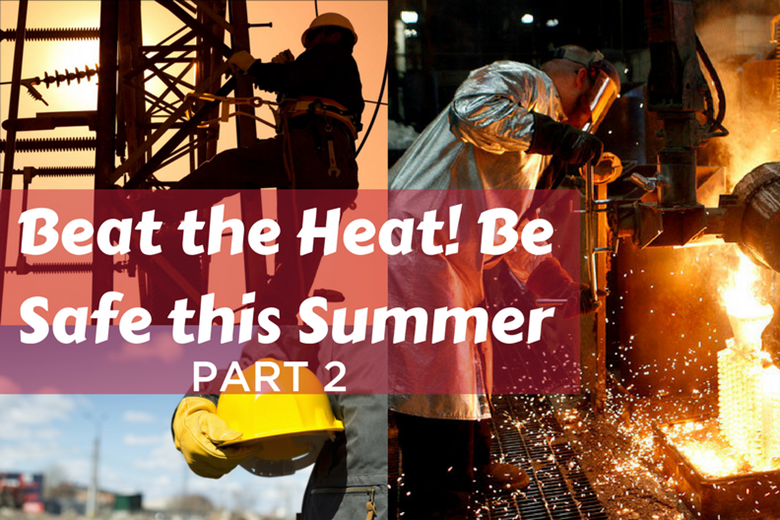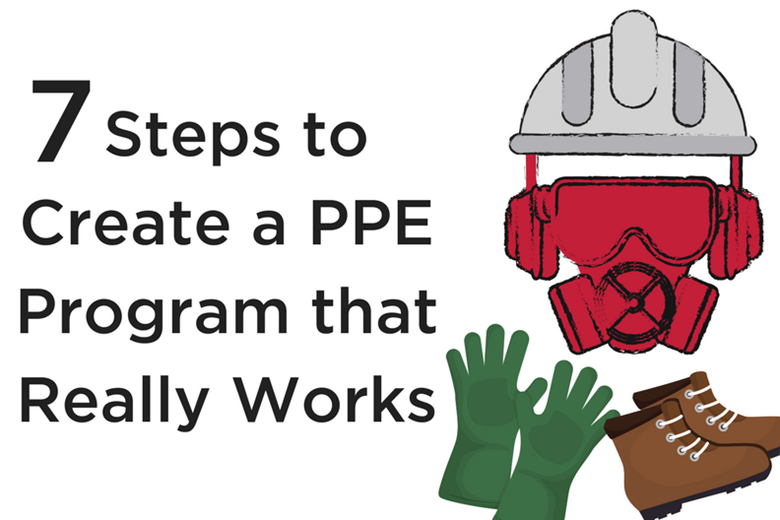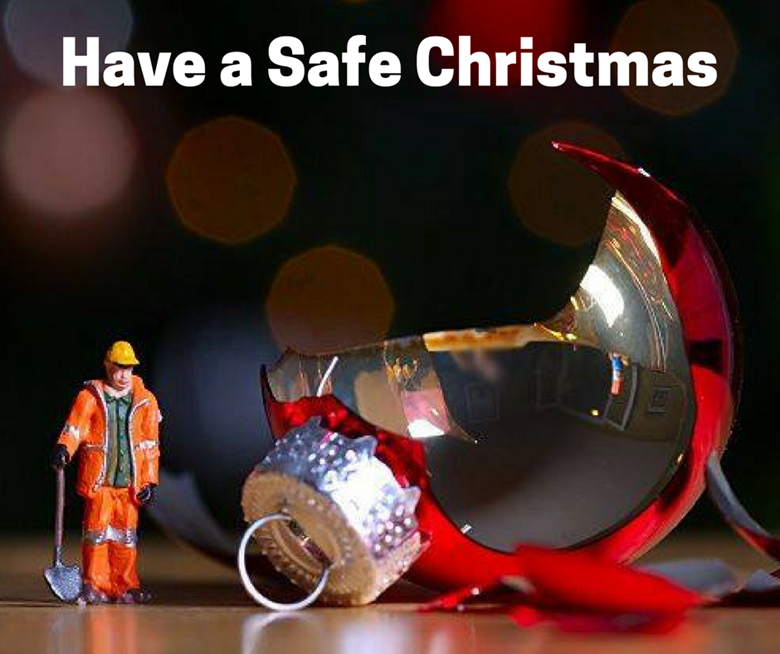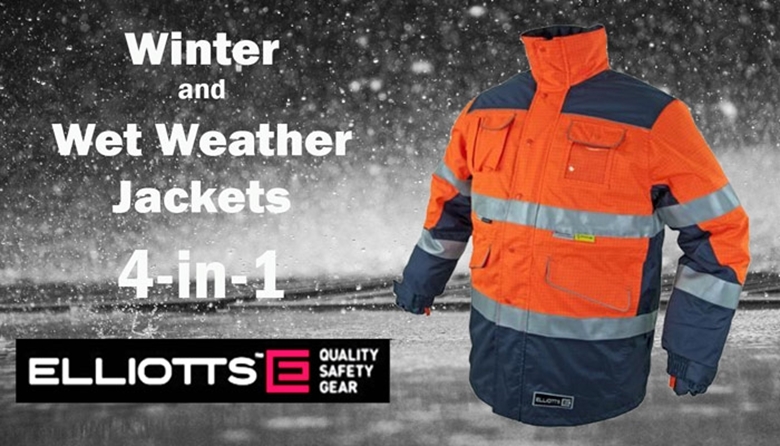Beat the heat! Be Safe in Summer. Part 1
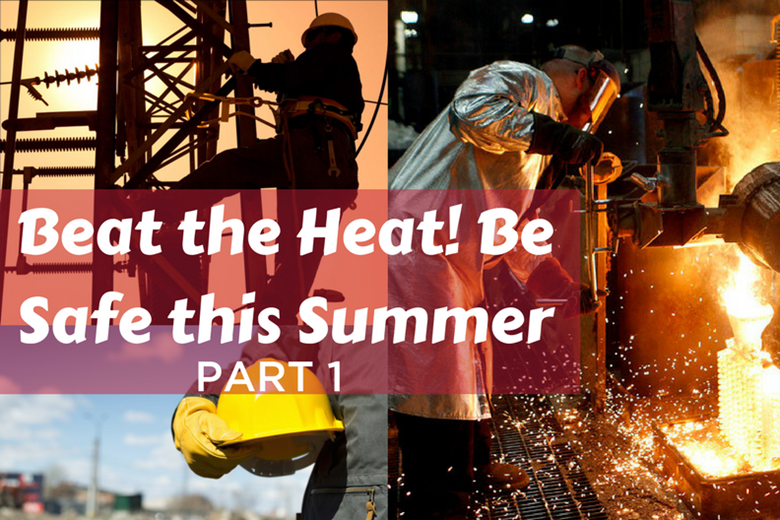
Heat Stress: Causes, Symptoms, and Prevention
People working in the heat of the Australian summer face many dangers, including heat stress, dehydration, over-excursion as well as UVA UVB sun exposure. In this blog, we hope to highlight some of these issues and offer advice to prevent these avoidable conditions.
Did you know that heat kills more Australians than any natural phenomenon and that heatstroke, the most serious form of heat stress, is fatal in up to 80% of cases?
Causes of Heat Stress
Many factors can cause heat stress and heat-related illness in the workplace:
◉ Dehydration - to keep healthy, our body temperature needs to stay around 37°C. The body cools itself by sweating, which normally accounts for 70 to 80 per cent of the body's heat loss. If a person becomes dehydrated, they don't sweat as much and their body temperature keeps rising.
◉ Lack of airflow - Working in hot, poorly ventilated, cramped or confined areas.
◉ Direct Sun exposure - especially on hot days, between 11 am and 3 pm.
◉ Exposure to radiant heat - The source of radiant heat could come from machinery, fire or industrial processes.
Symptoms of Heat Stress and Heat-related Illness
By the time you have some of these symptoms, you may not be able to recognise them in yourself which is why you should always keep an eye on your workmates and alert someone if you suspect that someone is ill. Some of the common heat-related illness symptoms include:
Deterioration in existing medical conditions - this is the most common health problem of heat stress.
◉ Heat rash - sometimes called 'prickly heat', this is a skin irritation caused by excessive sweating. It can occur at any age but is most common in young children. It looks like a red cluster of pimples or small blisters. It is most likely to occur on the neck and upper chest, in the groin, under the breasts, and in the elbow creases.
◉ Heat cramps - these include muscle pains or spasms, usually in the abdomen, arms or legs. They may occur after strenuous activity in a hot environment when the body gets depleted of salt and water. They may also be a symptom of heat exhaustion.
◉ Dizziness and fainting - heat-related dizziness and fainting results from reduced blood flow to the brain. Heat causes an increase in blood flow to the skin and pooling of blood in the legs, which can lead to a sudden drop in blood pressure. There can be a feeling of light-headedness before fainting occurs.
◉ Heat exhaustion - this is a serious condition that can develop into heatstroke. It occurs when excessive sweating in a hot environment reduces the blood volume. Warning signs may include paleness and sweating, rapid heart rate, muscle cramps (usually in the abdomen, arms or legs), headache, nausea and vomiting, dizziness or fainting.
Heatstroke - this is a medical emergency and requires urgent attention. Heatstroke occurs when the core body temperature rises above 40.5 °C and the body's internal systems start to shut down. Many organs in the body suffer damage and the body temperature must be reduced quickly. Most people will have profound central nervous system changes such as delirium, coma, and seizures. The person may stagger, appear confused, have a fit or collapse and become unconscious. As well as effects on the nervous system, there can be liver, kidney, muscle and heart damage.
Prevention
◉ Stay Hydrated - You need to drink more during hot weather, regardless of how active you are, even if you don't feel thirsty.
◉ Plan your day - If you cannot avoid work activity during the hottest part of the day plan your rest periods. Avoid too much exercise before or after work as this could exacerbate dehydration.
◉ Take breaks - Plan your breaks and make sure you and your co-workers take them.
◉ Seek Shade - Whenever possible and if there isn't any natural share, create some with a tent or tarp. Sitting in a vehicle isn't the best source of shade because UV Radiation still penetrates side and rear windows.
◉ Keep up your energy levels - Eat small portions often and stick to cool (Not freezing) foods such as sandwiches and salads.
◉ Check-in on others - Many people are loathed to complain if ill. If you suspect a co-worker is succumbing to a heat-related illness raise your concerns with a manager.
Dress Appropriately and Protect Yourself - If you work outdoors even for only part of the day, remember to protect yourself from the sun - by covering exposed skin with lightweight clothing designed to protect you against the sun and heat. Use sunscreen and reapply regularly. Wear a hat that shades your ears and neck and sunglasses.
Elliott's Quality Safety Gear supplies a range of products, specifically designed using state-of-the-art materials, to keep you cool or protect you from UV. One such range is the E-Cool® products which actively help you stay cool on hot days.
The E-Cool® range of products helps you stay cool on those hot days. The E-Cool® range has strategically placed E-Cool crystals that keep your upper body, head, and neck cool.
EASY TO USE:
◉ Just soak in cold water for 30 minutes
◉ Stays hydrated for several days
◉ Cool even when worn over a shirt
◉ Cool even when worn over a shirt or under a protective suit
◉ Re-usable - thousands of times
◉ Works without freezing or ice
Disclaimer: This blog provides general information and discussion about health and related subjects. The content provided in this blog, and in any linked materials, are not intended and should not be construed as medical advice. If the reader or any other person has a medical concern, he or she should consult with an appropriately licensed physician.
CONTACT US
If you want to learn more about what protective gear your workers can use to prevent heat stress at work, get in touch with us today at Elliotts Quality Safety Gear! Call us on 07 3265 2944 or visit message us through our Contact Page.

